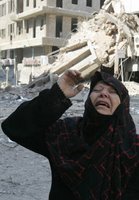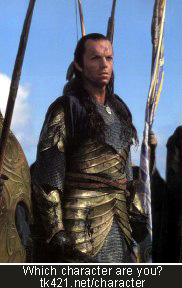The Hezbollah Photo Shop


Power Line reports that Reuters has now withdrawn all 920 photographs taken by discredited freelance photographer Adnan Hajj from its data base, having found a second case of alterations. But, as John Hinderaker points out, in addition to the question of faking photos, there is the separate issue of staging photos, with equally disingenuous results. Two proven cases have already emerged. Photographer Hajj, who is certainly a Hezbollah supporter, if not an actual Hezbollah agent, filed two photos of a Beirut building, said by Hezbollah to have been damaged by an Israeli air raid "the night before." The problem is that the photos are of the same building, and the air raids were eleven days apart. If Reuters, which distributed both photos, can somehow be excused for not noticing that they portrayed the same building, one certainly cannot say that for Hajj. (The most charitable conclusion is that he "dry-labbed" the second photo, allowing him to submit "fresh material" to meet a deadline, without going back out into the field.) You may view those photos at Powerline here.
Mr. Hajj is not the only customer of the Hezbollah Photo Shop, however. Drinking From Home has discovered a doozy of an example of Hezbollah-staged photography. Two different photos (see above right and left), taken by two different Arab photographers, two weeks apart, show a distraught woman bewailing the destruction of her home in an Israeli attack. This time, it is indeed two different destroyed buildings. The problem--it is the same woman. Either she has had an extraordinary run of bad luck, or she is the female equivalent of Hezbollah's blog-infamous "man in the green helmet."
[To prove I am open-minded, let me give you one true example from non-Hezbollah history of the "incredible wartime coincidence." A man named Wilmer McLean owned a farm near Manassas Junction, stretching along the banks of Bull Run. On July 21, 1861, it was in the midst of the battlefield for the first major battle of the Civil War. A shell came crashing through a window in McLean's farm house during the fighting, convincing him that he should seek a quieter place to live, farther from the bypaths of the Union Army of the Potomac and the Confederate Army of Virginia. He found the ideal spot, or so it seemed at the time, in rural hill country near the remote hamlet of Appomattox Courthouse. On April 9, 1865, Lt. Col. Charles Marshall, military secretary to General Robert E. Lee, selected Mr. McLean's small brick home as the appropriate place for General Lee to meet with General Ulysses S. Grant, to offer the surrender of the Army of Virginia. After the surrender was signed, and the Generals had departed, McLean watched helplessly as Union officers of rank and some ordinary soldiers tore his furniture apart for souveniers. Major miliary combat in the Civil War therefore literally began and ended at the homesteads of one unfortunate man, some four years and hundreds of miles apart.]





0 Comments:
Post a Comment
<< Home